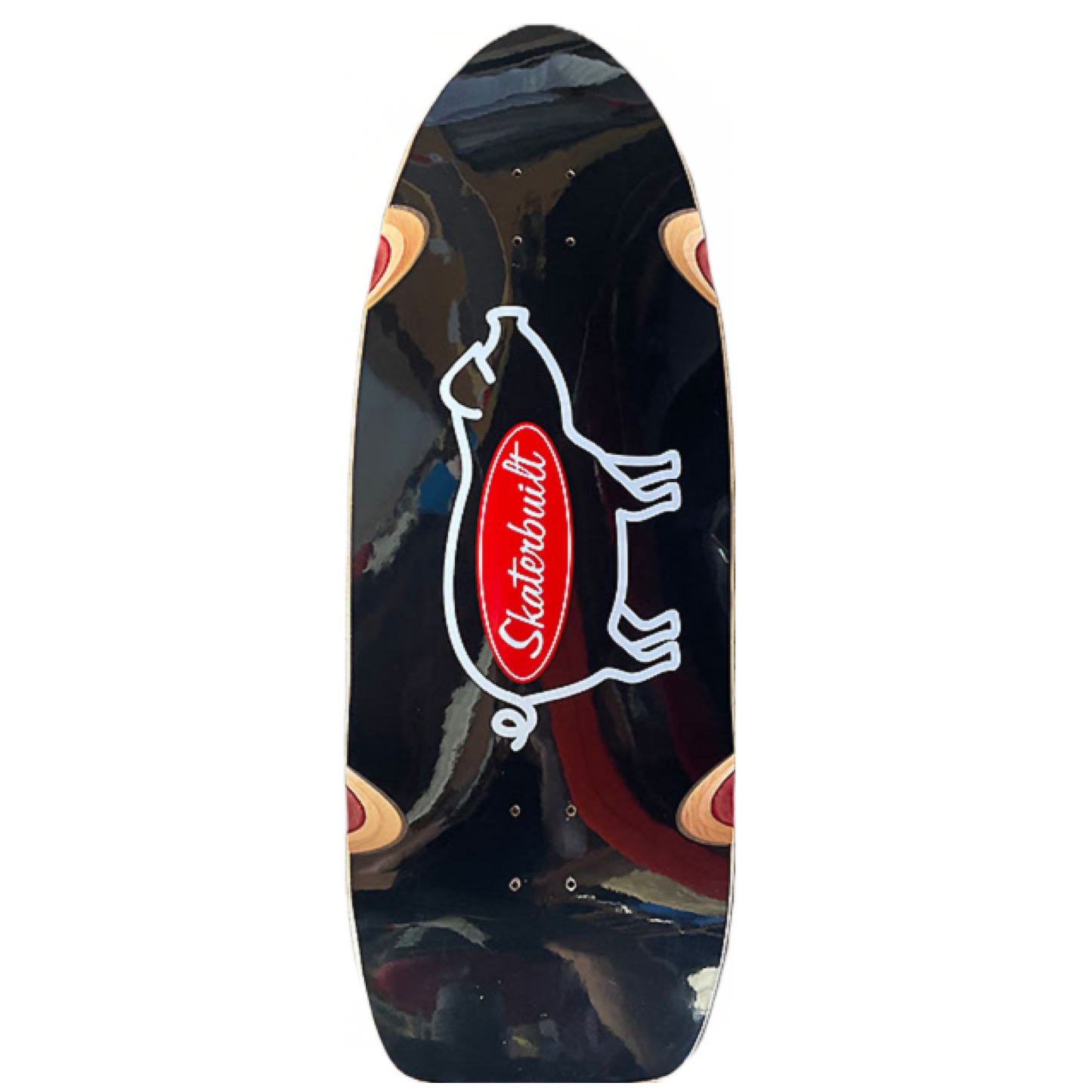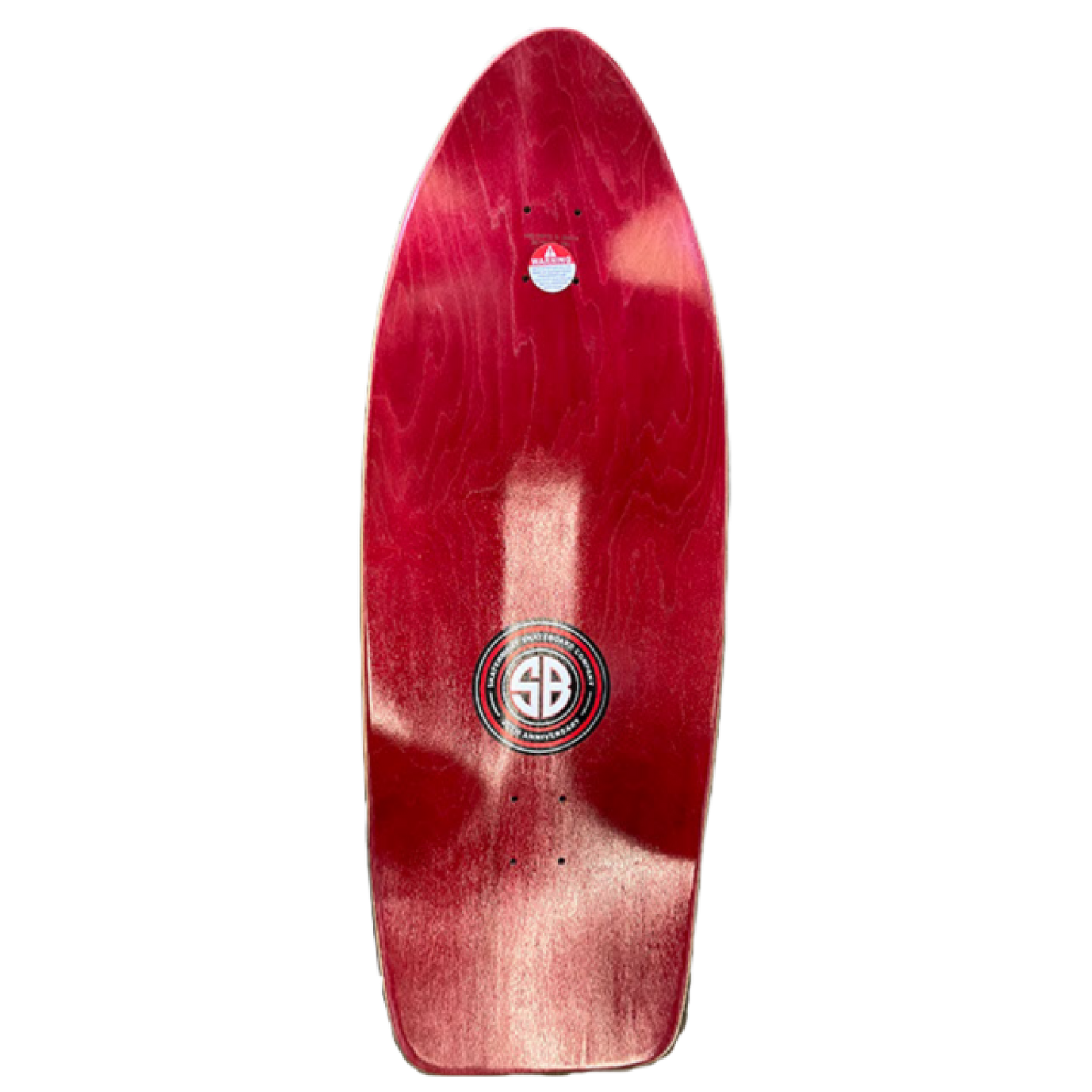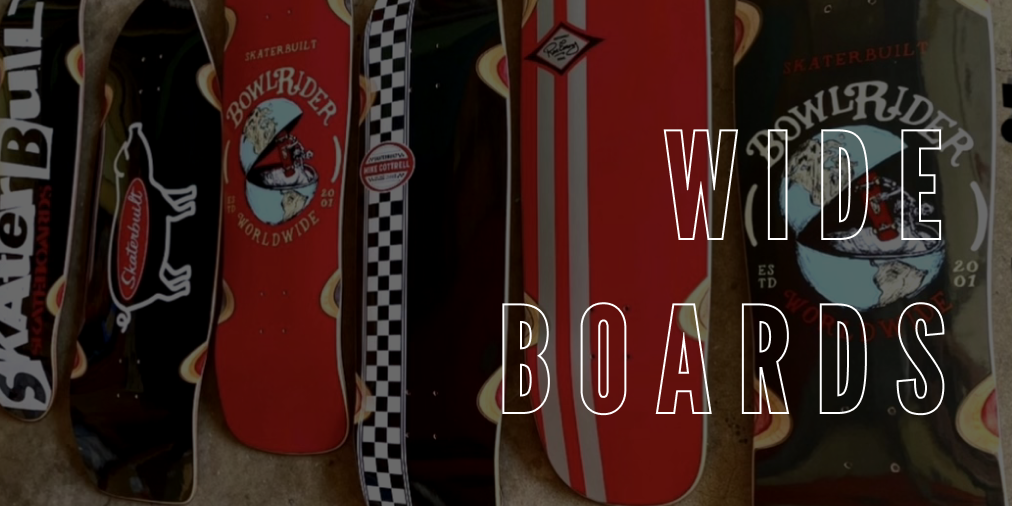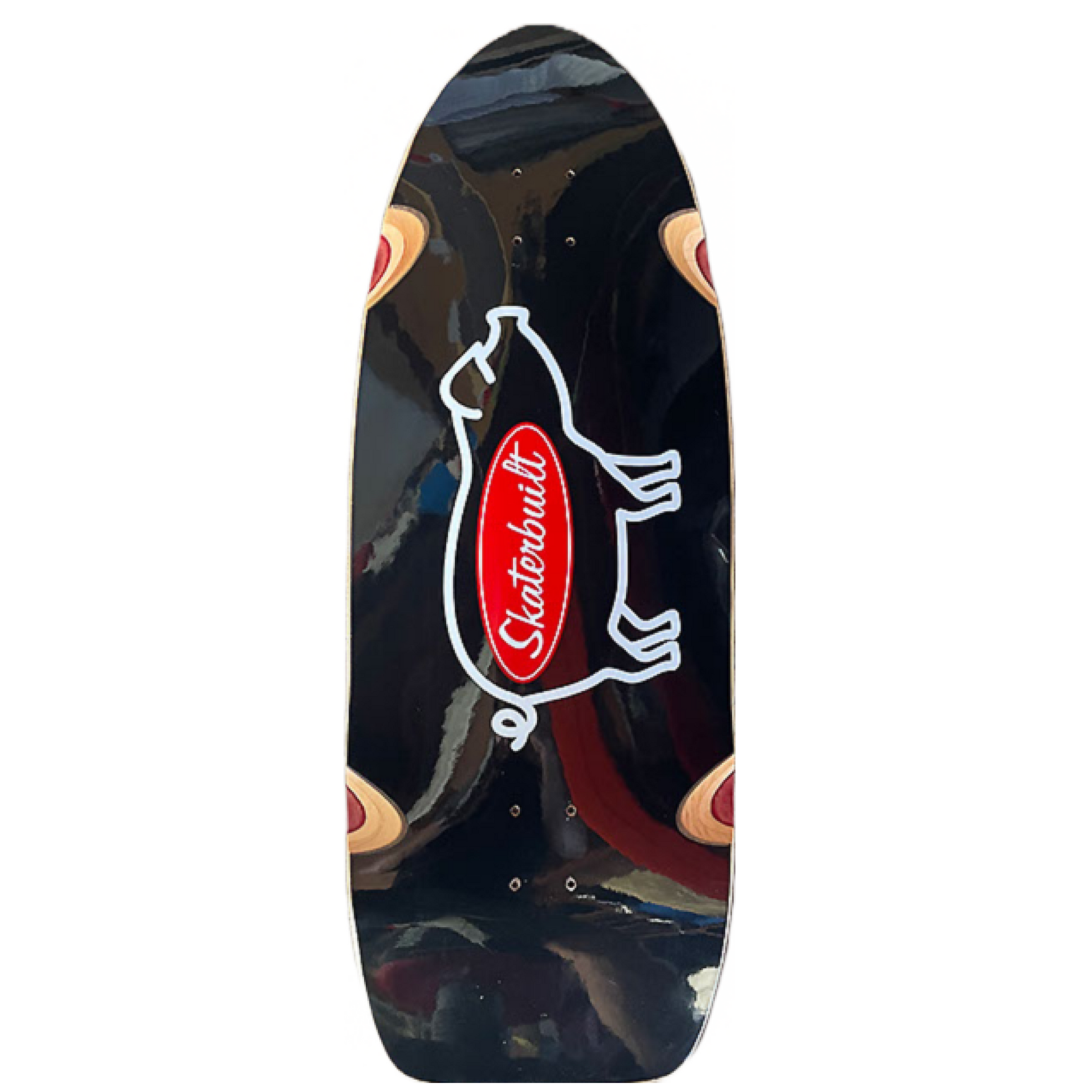Skaterbuilt Skateboards
The O.G. Pig Skateboard Deck - 12” Wide Classic (sold out)


An Ode To Wide Boards
Why ride a wide skateboard?
A good skateboard should fit you, your feet, and your style-whatever that happens to be. For Skaterbuilt founder Dave “davO” Hegstrom, that meant finding the widest board he could get his hands on. He remembers drooling over his buddy Mike Roots' brand new 12" wide Dogtown Bigfoot model in 5th grade-not knowing that very deck would have a such huge impact on him down the road. From that moment on he knew he wanted to ride wide boards.

Wide boards aren't just hype. They are all about functionality. They're perfect for bigger and older skaters looking to push the limits in pools, parks, and even in the streets.
But why? Well, let's start with the obvious: wide boards are...well, wide..having more surface area than typical street decks, which means you can go for bigger tricks with more control and leverage. Plus, they look a whole lot cooler than rolling around on a popsicle stick.
A walk down memory lane..
Early skateboards were relatively simple. In the '60s they were quite literally flat wooden planks with roller skate wheels. "Sidewalk surfers" where the first boards to propel skateboarding to become more widely known than the masses Later on in the 70’s, the rise of the kicktail would propel skaters both literally and figuratively to new heights.
Wide boards became a major innovation in skateboarding as pool skating grew in popularity.
During the late 70’s and through the 80’s, pool skating grew in popularity and so did the idea of a wider board. The wide board was a major innovation that made it possible for pool skaters to push their skills to the limit and rip in any bowl or ramp they could find. This is where today's modern skateboarding comes from—and it all started with pool skating!
Early wide boards did have their drawbacks. Their noses were small and short which limited switch skating and any nose slide variations..that and their lack of and substantial concave.
Boards began to shrink as street skating grew.
Throughout the 90’s skateboards lost both their width and shape as skateboarding took to the streets. Street skating reached peak popularity in the 2000’s and was characterized by smaller decks no more than around 8” in width. These boards had kicktails and upturned noses that gave skaters more leverage when doing flip tricks; but lacked width and template shape. During this time only a few dedicated pool skaters continued to ride wide boards..with davO being one of them. It wouldn't be long until more people realized the innovation they had left behind in the quest for more technical flip tricks.
Blurring the lines between old and new
As modern skateboarding has evolved, the lines between vert, park, and street skating have blurred. Whether you're an OG looking to rip for life or a young grom looking to leave your mark on the your local skate spot..Skaterbuilt makes a board that fits your needs...but in our case, we hope itsa wide board.
Skaterbuilt set out to create the perfect combination of modern technology with classic design in mind. We've combined the innovation of modern boards with the wide deck and longer wheelbase of their 80’s predecessors-allowing skaters to enjoy the best of both worlds.
Ride With Us!
From ditches to pools we've got you covered. Find out why Skaterbuilt skateboards are built to wreck shit.


